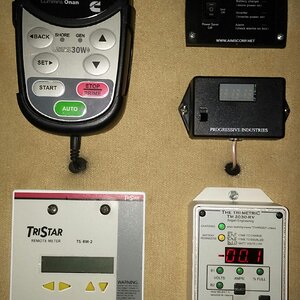I would still suggest, and like to hear what Michelin says, send pictures to the RV group and see what they have to say about this, what causes it, etc. I've spoken with them before long ago, not hard to get in touch with and was easy to work with.
They don’t explain the chemistry or physics of it here but they do discuss the issue in the Michelin Tire Book, page 8:
LONG TERM STORAGE
MICHELIN® RV Tires
When a tire is fitted to a wheel and put under load, but it is not regularly used, the tire does not have an opportunity to
“exercise” and will prematurely age.
If a recreational vehicle is not driven regularly, care must be
taken to preserve the remaining life of the tires. Best practices include:
1. Store the recreational vehicle in a cool, dry, sealed garage,
away from electric generators or transformers. Do not store in an area where welding is performed, or in a garage that has frequently used electric motors.
2. Place a barrier between the tire and the storage surface. Suitable barriers include plastic, plywood, cardboard, or rubber floor mats.
3. Before storing the vehicles, thoroughly clean tires with soap and water.
4. If outdoors, cover tires to block direct sunlight and ultraviolet rays.
5. Inflate tires to the maximum inflation pressure indicated on the sidewall.
6. If long term storage exceeds 3 months, consider taking the recreational vehicle for monthly highway drives (about one hour of operational time). Driving the vehicle will give the tires an opportunity to generate internal heat which will promote long life.
Before removing the vehicle from long term storage,
thoroughly inspect each tire, and restore all tires to the proper inflation pressure.
















